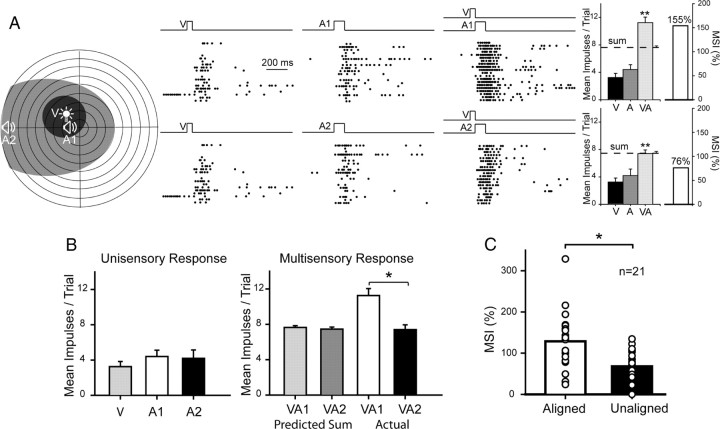Figure 8.
A spatial “proximity effect” was induced by the cross-modal exposure experience. A, This exemplar neuron exhibited significantly greater multisensory responses to “aligned” cross-modal stimuli that matched the exposure configuration (VA1) than to those that were nonaligned (VA2) despite still being within their respective receptive fields. B, Whereas the former configuration produced responses that were larger than the predicted sum of the V and A responses (i.e., superadditive), the latter produced only additive responses. C, This was generally the case in the population of neurons studied. Results from this population are shown by comparing average MSIs in aligned and unaligned conditions. Conventions are the same as in prior figures.

